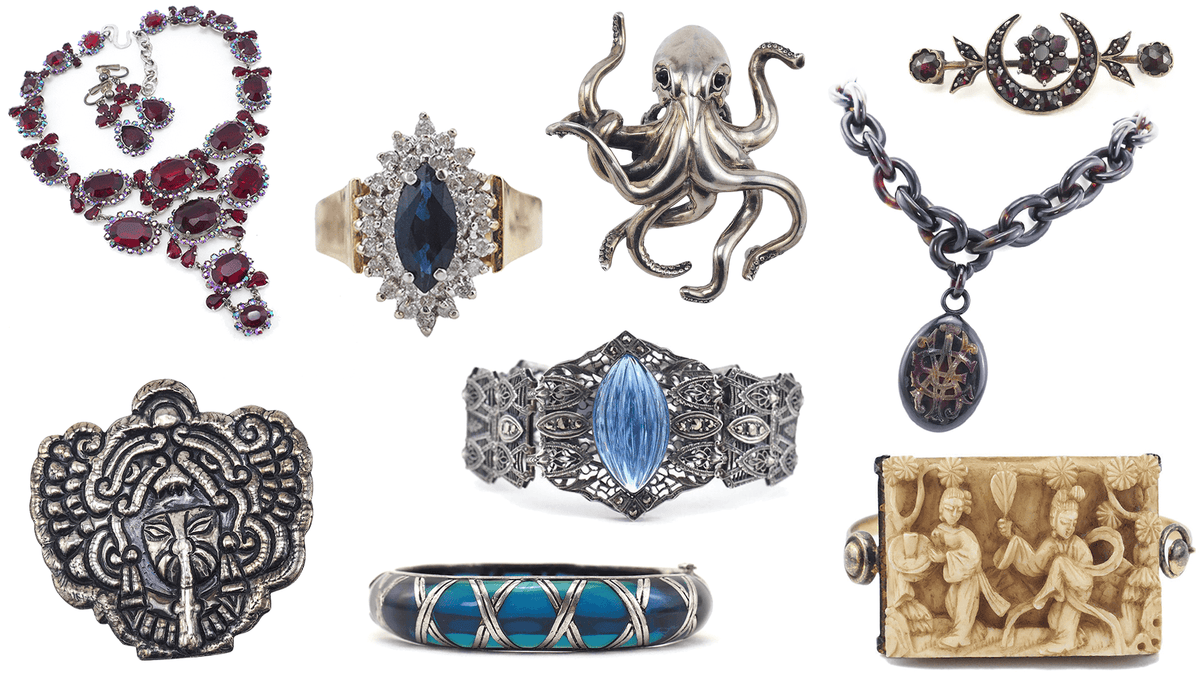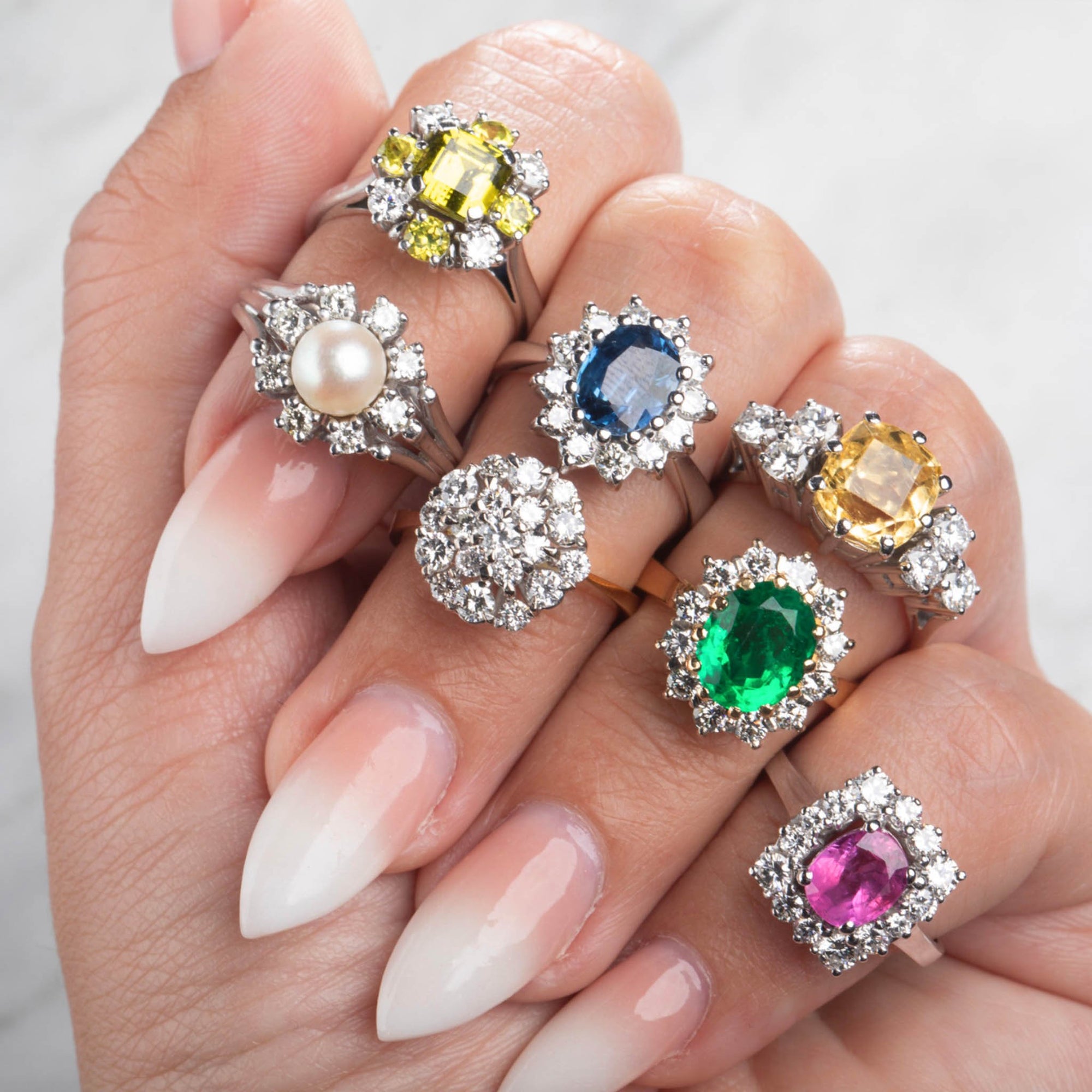Estate Jewelry Austin TX: Expert Tips for Shopping for Vintage Jewelry
Estate Jewelry Austin TX: Expert Tips for Shopping for Vintage Jewelry
Blog Article
Uncover the Rich Background Behind Stunning Estate Fashion Jewelry Collections
The expedition of estate precious jewelry collections offers an one-of-a-kind window into background, disclosing the elaborate partnership between workmanship and cultural advancement. What tricks might these collections still hold?
The Origins of Estate Precious Jewelry
Just how did estate jewelry pertained to personify the rich background and virtuosity of lost periods? The origins of estate precious jewelry can be mapped back to various durations of craftsmanship, where jewelry was not simply an accessory yet a representation of societal values, technological improvements, and imaginative expressions. Each item narrates, commonly connected with the lives of their previous proprietors, enveloping individual stories along with historic contexts.
The term "estate fashion jewelry" typically describes previously owned items, usually from considerable eras such as Victorian, Art Nouveau, or Art Deco. These items were produced with meticulous attention to information, showcasing the ability of craftsmens who made use of products like gold, silver, and precious gemstones. Unlike modern jewelry, estate items commonly feature unique designs that highlight the visual appeals of their time, therefore acting as tangible links to the past.

Notable Style Eras
Throughout history, several notable style periods have dramatically influenced the advancement of estate fashion jewelry, each identified by distinctive designs, products, and cultural contexts. The Georgian period (1714-1837) marked the beginning of detailed styles, usually featuring nature-inspired motifs and the usage of products like gold, silver, and gems set in fancy setups. Following this, the Victorian era (1837-1901) presented enchanting motifs, with sentimental fashion jewelry and ingenious strategies such as making use of enamel and cameos.
The Art Nouveau duration (1890-1910) celebrated organic kinds and the beauty of nature, using materials like opals and pearls in flowing layouts. This was prospered by the Art Deco age (1920-1939), which welcomed geometric patterns, strong shades, and lavish products such as platinum and rubies, showing the modernist spirit of the time.
The Mid-Century Modern era (1940-1960) showcased structured styles and the use of unconventional products, emphasizing minimalism and functionality. Each of these eras not only reflects the artistic movements of their time yet additionally envelops the social worths and technological developments that shaped jewelry layout, making them an interesting subject for collectors and chroniclers alike.

Famous Estate Jewelry Collections
The rich history of estate precious jewelry is perfectly exemplified by a number of prominent collections that display the artistry and workmanship from numerous style eras. One of the most popular is the Cartier Collection, which shows the deluxe and development of the renowned French jeweler. Pieces from this collection typically include splendid gemstones and elaborate designs, highlighting the brand's commitment to fine workmanship.
One more significant collection is the Duchess of Windsor's jewelry collection, which consists of numerous unique pieces, consisting of the renowned "Windsor" bracelet. This collection not just exhibits the elegance of the Art Deco period yet also brings an abundant narrative of love and loss, as it came from Wallis Simpson, that notoriously wed Edward VIII.
The collection of the late starlet Elizabeth Taylor also sticks out in the world of estate blog here jewelry. With numerous pieces created by distinguished jewelry experts like Bulgari and Cartier, her collection personifies glamour and elegance, underscoring her individual design and fondness for distinct gems.
These famous estate fashion jewelry collections act as a testament to the long-lasting allure of great precious jewelry, using insight right into the artistic and cultural movements that shaped their creation.
The Social Value
Estate precious jewelry collections hold profound social importance, showing not just the visual worths of their corresponding eras but also the social and historical contexts in which they were created. Each piece frequently personifies the craftsmanship and artistic fads of its time, showcasing the evolution of design and modern technology in jewelry production.
In addition, these collections function as concrete web links to social traditions and rituals. Wedding celebration bands and treasure breastpins might symbolize love and familial bonds, while items adorned with details gemstones can represent local or social identifications. The products made use of-- whether gold, silver, or jewels-- typically inform tales of profession, exploration, and the wide range buildup of cultures.
Furthermore, estate precious jewelry can work as historic artifacts, offering insights into the lives of people and the societal standards they navigated. The means precious jewelry was used and valued can disclose much regarding sex duties, condition, and individual expression within differing social landscapes. Because of this, estate jewelry goes beyond plain decoration, working as a rich story of human experience, artistry, and social heritage, inviting modern audiences to involve with the past in a meaningful method.
Taking Care Of Your Estate Pieces
Caring for estate jewelry pieces requires a thoughtful strategy to ensure their durability and preserve their special qualities. Constantly clean estate fashion jewelry making use of a soft, lint-free towel after each wear to get rid of oils and dirt.
Storage is equally important; store items individually in a fabric-lined box to stop tangling and scratching. Think about using anti-tarnish pouches or cloths for silver things, as this aids to reduce down the Recommended Site tainting process. Additionally, stay clear of subjecting precious jewelry to too much dampness, extreme temperature levels, or straight sunshine, which can adversely impact gems and steels.
Consulting a jewelry expert experienced in vintage or antique pieces can web supply specific care choices. By implementing these methods, collectors can protect their estate precious jewelry's aesthetic and historical worth, making certain these items proceed to be valued for generations to come.
Final Thought
Finally, the expedition of estate fashion jewelry collections reveals a tapestry of creative expression and cultural value, showing the worths and visual appeals of numerous historic periods. Once had them, each piece serves as a testimony to remarkable workmanship and the stories of those who. Understanding the beginnings, design ages, and notable collections boosts recognition for these artifacts, stressing their role in protecting social heritage and encouraging ongoing stewardship and care for these exceptional prizes.
The exploration of estate precious jewelry collections supplies an one-of-a-kind home window into history, exposing the complex connection between craftsmanship and cultural development. The beginnings of estate jewelry can be mapped back to numerous periods of craftsmanship, where fashion jewelry was not simply an accessory yet a representation of social worths, technical advancements, and creative expressions.The term "estate fashion jewelry" generally refers to used pieces, typically from considerable periods such as Victorian, Art Nouveau, or Art Deco.The rich background of estate precious jewelry is beautifully exhibited by numerous renowned collections that display the creativity and craftsmanship from various layout eras.In conclusion, the exploration of estate precious jewelry collections exposes a tapestry of creative expression and cultural value, mirroring the values and aesthetics of different historical periods.
Report this page